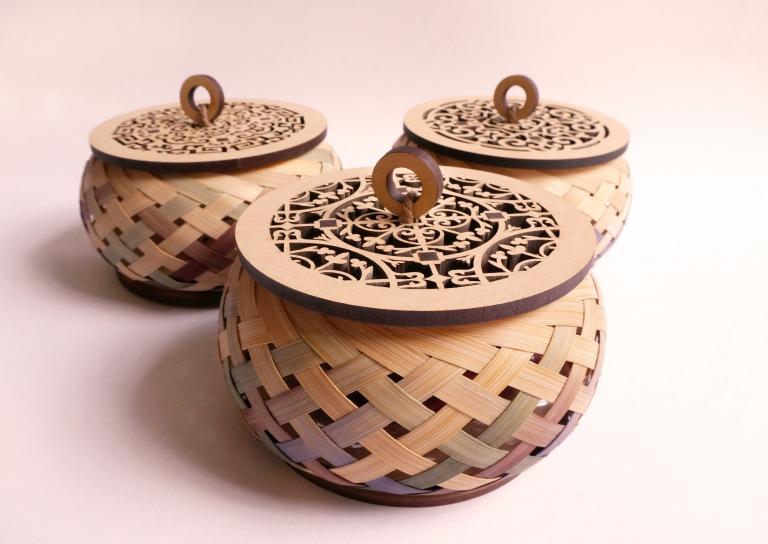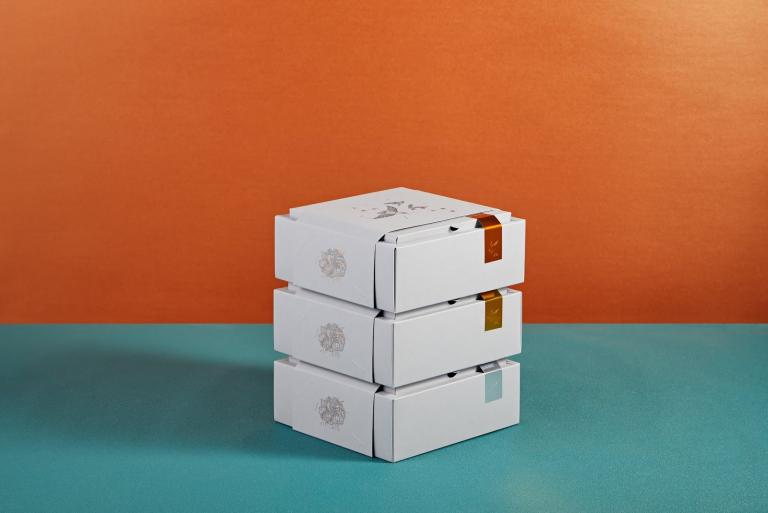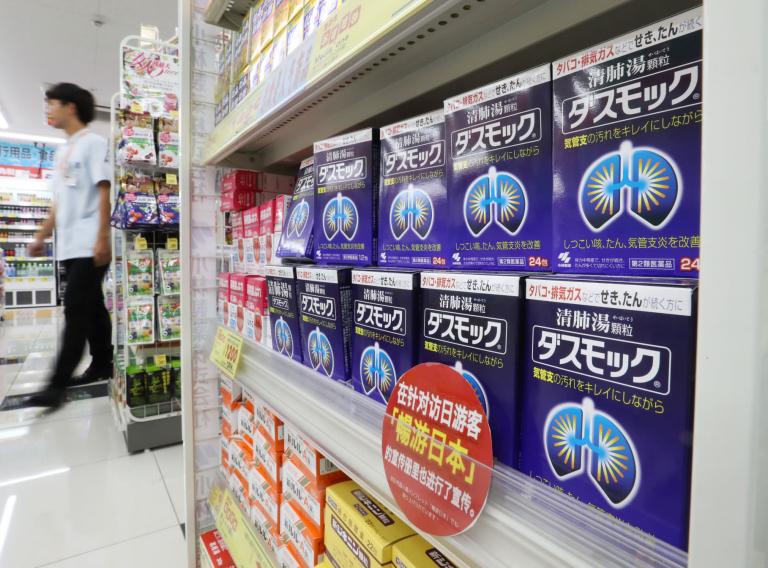Chinese traditional packaging materials
10 min readThe materials, ornament and crafting of traditional package of China have kept on developing with the progress in productive force, science and technology, culture and fashion, in different styles during different periods. Package in early days were made mostly with natural materials such as tree leaves, bamboo, lotus and Japanese banana leaves, calabash, coconut, shells, animal skin and ox horns. Later on, artificial materials such as fabrics, ceramics, metal, painted woodware, jade and paper were gradually used. The most primitive package appeared in the late period of the primitive society. For example, bamboo tubes, calabash, coconut shells and painted pottery ware were used for liquid commodities such as wine, vinegar and oil; baskets braided with bamboo or grass, or bamboo and lotus leaves were used for solid articles. Earthenware appearing in the Neolithic was the first great invention in the artificial packaging materials. Compared with natural materials, it is not only durable and protects against corrosion and insects, but also allows long distance transport, and is in diversified forms. The 12 sealed food gallipots dated 316 BC unearthed at Baoshan of Hubei Province could be the earliest”canned food” in the world. These gallipots in the Warring States Period were made with meticulous multi-layer sealing package using gauze, grass cake, bamboo leaves and wet earth. Some of them even had a bamboo basket with handle, to facilitate carrying and transport. The outermost one or two layers were tough silk, then the pot was tied up with thin bamboo strip or silk strip, its top was sealed with earth, with a label bearing the name of the contained food inserted in the sealing earth. This way of packaging allowed metabolism of the food inside, so that it could be reserved for long time without deterioration and change of color or taste. During the Shang and Zhou Dynasties merchants specialized in commerce started to appear. With developed bronze ware technology at the time, bronze containers were often used as package for food such as wine and meat. Furthermore, articles such as fabrics, white pottery, lacquer ware, horn work, wood ware, leather ware and bamboo ware had the dual functions as container and package. The jade dagger-axe was a treasure in the Imperial Palace, after long years, the silk and hemp fabric originally as package is now closely stuck on the surface of the axe. During the Spring and Autumn and Warring State period, commerce became more prosperous, and earthen ware was popular as packaging containers, in the meantime natural plant materials, such as tree leaves, bamboo, melon and fruit shells, grass and rattan were also used as packaging materials. But these were mainly used as large package for storage and transport, and also as general package for different goods, not as dedicated package. Some merchants paid great attention to package of commodities to attract customers, and there was even a tendency that sauce was better than the fish. The ancient works Han Feizi recorded a story “keeping the glittering casket and giving back the pearl to the seller”: a man of the Chu State, to sell a precious pearl in the Zheng State made a casket with precious scented wood for the pearl, and the casket was incensed with spice and ornamented with pearls, ruby and jadeite, but the result was that a man of the Zheng State kept the casket and gave back the big pearl to the seller.

With the development of lacquering technology, lacquer ware package was quite prevailing in the Han Dynasty, and the main materials for this type of package have been used down in the history. Among them, the multi-grid casket and ear cup were ingeniously designed, they could contain together a number of small articles, and be either integrated as one or separated not only saving space but also light and clean. For example, the unearthed double-level nine-grid lacquer casket with color painted clouds has nine small boxed in the bottom level, and gloves and belt on the top level. Paper was the second great invention in the artificial packaging materials. Before Cai Lun of the Eastern Han made improvemen to paper-making- technique, there was ancient paper for plotting maps in the and Han periods, and in Western Han period, paper made from coarse bamboo and hemp was used to pack bronze mirrors. The improved paper was soon used as package, for various daily articles, food and drugs. After that, paper became the most popular and most important packaging material. In the Tang Dynasty, paper was extensively used as package for commodities, mainly including snacks, tea and traditional Chinese medicine. In 1964, small package of Chinese medicine “Polyghace Seche Pill” packed in hemp paper was unearthed from a Tang tomb at Astana in Xinjiang, and it was written on the packaging paper “take 15 pills with empty stomach each time, and sleep after taking. The block printing was invented in early Tang period, and spread gradually along the Yangtze River and to Luoyang and other places, widely applied in printing books, calendars, Buddhist sutras and figures, divination and commercial trading. Packaging paper was also printed with words, graphs and signs as advertisement. Following the invention of typography in the Song Dynasty, the printing on package was also further developed. The combination of paper-making and printing technologies, plus the application of traditional Chinese cultural arts such as poetry, calligraphy, painting and seal cutting, the traditional package was given thick Chinese characteristics in both form and decoration. During Northern Song Dynasty, the ceramic technique was well developed, and many ceramic wares were used as packaging containers. For example, the white enameled porcelain mirror box with black flowers of Northern Song in Nanjing Museum bears two characters “mirror box” in regular script; and the plum vase with black flowers on white background from the Cizhou Kiln in Song Dynasty now kept at Shanghai Museum bears four big conspicuous characters “drunk state wine sea” in cursive script on the body. Plum vases were quite popular during the Song Dynasty, mainly for wine; the Yuhu Spring bottle was even named for containing the wine “Yuhu Spring. Exquisite and elegant package not only attracted customers, but also added much value to the article being packaged. For some commodities, the external package was indicated with trademark place of making and title of shop, not only ensuring the reputation of the commodities but also preventing possible fake and inferior quality commodity. For example in Song Dynasty, Jinan, the Liu’s Needle Shop exclusively sold hand-made- fine needles, not only there was pair of carved white stone rabbits in front of the gate, the packaging paper of fine needles was also printed with the white rabbit pattern and words “please note the white rabbits in front of the gate as our trademark. This copper plate for trademark as the earliest known up to now is now kept at China National Museum.

During Tang and Song Dynasty, Chinese and foreign cultural and economic exchanges were frequent, and quite a few commodity packages reflected the foreign culture. Many ceramic wares were in unique shapes and with exquisite graphic patterns, some in thick western style. In addition, package for transport was improved and completed. In Song Dynasty, ceramic export was bulk transactions, people packed small wares within bigger ones to facilitate long distance transport. At that time, package already got the general functions as modern ones, becoming the main means to protect the commodities, facilitate transport and promote marketing.
During Ming and Qing Dynasty, with the further flourishing of industries and commerce and the appearance of capitalism in embryo, people had enhanced awareness of commodities, package became daily exquisite, all kinds of lacquer and satin package boxes were beautiful, elegant and luxurious, and package itself became an art. The most representative was the package for palace articles in the Qing Dynasty. The Qing palace package had two series: palace and civil. Those of palace series were made by workshops dedicated for the emperor, embodying the typical palace style and distinct features of the times in selection of materials, structure design and decoration, pursuing for nobleness and elegance, entailing the imperial ideas and royal style everywhere, and demonstrati the thick cultural deposit of China. Those of folk series are package for articles as tributes from local officials to the emperor, mainly as practical package with emphasis on its function, while the decoration mainly complied with the imperial aesthetical standard and temperament. The imperial”box shop,””lacquer shop”and”carpentry shop”were packaging shops dedicated to serve the imperial palace, and they selected packaging materials quite strictly, and superior materials such as red sandal wood, lacquer, enamel, bamboo engraving, gold and silver lace and silk fabrics were often selected; a number of techniques were also adopted in making the package, such as engraving, carving, painting, inlaying, firing and weaving, embodying the superb technical level in the Qing Dynasty.

After 1840, China was forced into the international capitalist market, foreign merchants and goods rushed into China in large quantities, Chinese and foreign capitals were in intense competition, package and advertisement attracted attention from businessmen as important means in commercial competition, and modernized package advertisements were produced as needed. In early 20century, large foreign companies and Chinese companies set up specialized package and advertisement design departments, for example, the Anglo-American Cigarette Company, Nanyang Brothers Tobacco Company and the Commercial Press all had their own advertisement department or painting department; other enterprises would invite cartographers(at that time, there was no professional designer to do package and advertisement design. The Commercial Press of the day, in addition to publication and printing, also undertook package and advertisements, and also fostered commercial fine artists; Hang Zhiying, Jin Meisheng and Jin Xuechen all studied systematically at the painting department of the press (for three years. Starting from the 1920s, a batch of private commercial fine art design institutions were set up, and in Shanghai alone, there were: “Zhiying Studio” of Hang Zhiying, “Shangmei Graph Studio” of Chen Zhifo, “Chinese Commercial Advertisement Company” of Lin Zhenbin and “Great Bear Industrial and Commercial Arts and Crafts Shop” of Pang Xunqin, they did package and advertisement designs for other companies, with significant influence on the package sector in Shanghai. In the period of the Republic of China, a wide variety of packaging materials were used. Paper was a common packaging material in extremely wide use, with rich forms, in addition to taking shape by its own it could also be used in conjunction with other materials. Especially, color printed paper box packages were widely used in many trades. Metal cans made of iron, aluminum and tin were in diversified forms with exquisite printed patterns, and could be sealed up, not easily damaged, therefore they were mostly used as package for cigarettes tea, condiments, candies, biscuits, cosmetics, paint and medicine. Tinplate cans and metal tubes were representatives of the metal packages in the period of the Republic of China. The new material for cans -electrolytic tinplate not only has good mechanical performance (high strength and easy to form), but also has excellent barrier property (preventing air, moisture and light and keeping fragrance)and good printing feature (the printed trademark and graphs are bright and beautiful), furthermore it can be recycled, so this packaging material is still in use today. Wood was used fairly less in contemporary commodity package, the finished surface of wood was painted or coated with lacquer, and decorated with color painting and trademark, it is durable. Glass is inert to chemical reaction and can prevent volatilization of fragrance, also looks clean and pure, so it is mostly used as package for wine, medicine, cosmetics and other hygienic products. Some bathroom supplies were still packaged with traditional porcelain wares of Jingdezhen. The decorative patterns of package in the period of the Republic of China had varied designs for different commodities Beautiful ladies were seen most on package, both classic and modern; the former was for the purpose to carry on the traditional ethics and etiquette, and the latter was focused on recommending modern ways of life and material culture. The flourishing movement for China-made goods also produced extensive effect on the package styles in those days, patriotism, national awareness and traditional culture became important content and features of the times in package design. For example, traditional and auspicious patterns of landscape and figures, flowers, birds, fishes and insects, historical stories, characters of happiness, longevity and good fortune, graphic design mainly with words such as “patriotic”and “national goods,” and patriotic figures of Yue Fei and Hua Mulan were extensively used , as representations of the nation. For some commodities mainly for export or selling to foreigners, the package design had more sense of modern and western flavor.
During the early years after the founding of the People’s Republic of China, “practical, economic and beautiful”was the principle followed in package design, and it was required that package should mainly be practical and portable. The technique of expression was characterized by realism in plain styles. After the start of reform and opening up, with the influence from the west design ideas, and the emergence of new materials and technologies, modern package design in China became more internationalized and diversified. In 1980, China Packaging Technology Association was established (renamed as China Packaging Federation in 2004), for the purpose to promote the sustained, rapid, healthy and coordinated development of the packaging industry of China, and it also joined the World Packaging Organization on behalf of China, to strengthen the exchange in packaging technologies and design between China and other countries. Of course, materials, technologies and styles of traditional packages are still used on the commercial market, especially, the traditional packaging concept of being natural and environmental-frie-, adapting to local conditions and making the best use of everything is in line with the contemporary ideas of green design and sustainable development, and has become part of the contemporary Chinese package design with the cultural characteristics of China.









